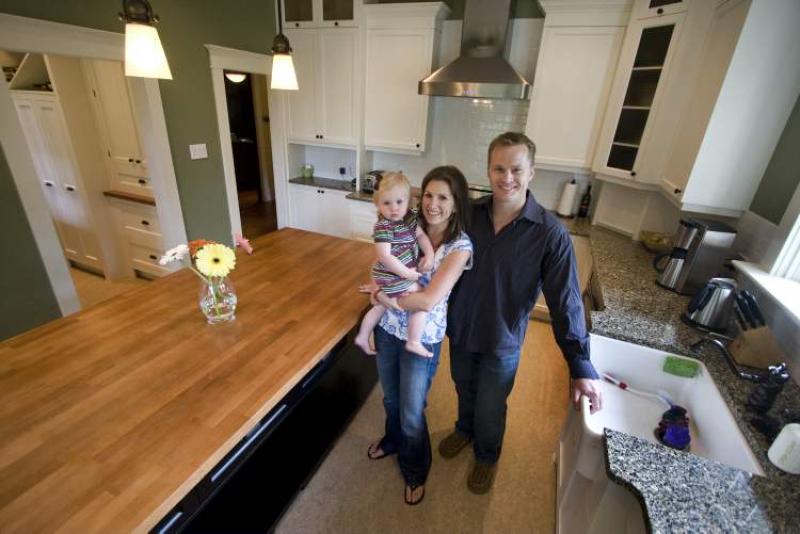
Hands down, granite is the most popular kitchen countertop material, but people looking for an alternative are rediscovering the beauty of wood.
The mirror finish on a granite countertop may be attractive and gives most kitchens a "wow" factor, but not every cook wants the cold, hard look of polished stone. There are some homeowners who prefer the warmer look we associate with more organic materials, such as wood.
The rise in awareness of native wood has, in part, been driven by consumers looking for an ecological, or green, alternative to granite.
Canada produces only about 20 per cent of our granite for home applications. Much of the granite we see in stores these days comes from overseas -- Brazil, India and Italy are just three of the countries that export granite, marble and other varieties of stone to Canada.
While stone is a natural product, many people object to the fossil-fuel consumption needed to transport a heavy product halfway around the world.
Hardwood, on the other hand, is grown and harvested much closer to home. Some is grown in managed forests. Lumber from these trees carries the Forest Stewardship Council label, much as organic labels on produce. Wood is a renewable resource.
Some woods come from threatened species or threatened rainforests, so you have to check product sources carefully.
One reason people ask for wood is because it is forgiving. Because of wood's elasticity, it is less hard on dropped items. The surface may dent, but a piece of china or crystal knocked over on a wooden counter will in all likelihood survive.
If the surface is damaged -- by stains, scratches or scorching -- it can, in most cases, be easily repaired. The affected part can be sanded down and refinished. More heavily damaged pieces can have the parts removed and replacement wood glued in.
While damage can be fixed relatively easily, some homeowners might not be accustomed to the regular maintenance a wood countertop requires. Wood is still alive, and expands and contracts with the seasons and changing humidity levels in a kitchen.
If food is to be prepared on the surface, the wood needs to be treated with food-grade mineral oil, sometimes called butcher-block oil. This oil needs to be reapplied periodically.
Most wood tops these days are for kitchen islands. Consumers considering using wood countertops around sinks should take extra care with standing water. As wood can absorb water, mould and mildew can develop, creating a potential health hazard.
Sealing the exposed edges around the sink cutout is recommended to close the pores.
There are in excess of 30 species of domestic hardwoods, such as maple, American cherry, walnut, oak and alder. Customers and designers sometimes ask for more exotic woods, such as zebra wood, to make a bold statement.
While people will likely shop for wood for the way it can warm up a room, they certainly won't be shopping for a bargain. A kitchen island milled in a domestic solid hardwood, such as eastern maple, can cost as much as granite. Exotic woods can cost as much as four times more.
-- Postmedia News




